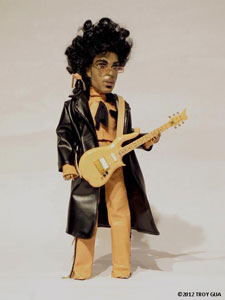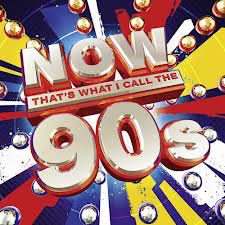Omphaloskepsis Blog
Copyright Basics for Artists Part 3
Nov 26, 2012
Copyright Basics for Artists part 3
Blog cover: Cariou v. Prince (Richard). This case is in appeals after the court ruled against Gagosian and Richard Prince in support of photographer Cariou's copyright protection. The penalties were severe. Below: Troy Gua: Le Petit Prince. Discussed below.

In part two I walked you step-by-step through the government website http://www.copyright.gov and the process of registering your copyright. It’s very important to register your copyrights. Even though the moment you create an original work, you own the copyright, (Article I, Section 8, Clause 8 of U. S. Constitution) Implemented by federal statue – 17 USC 101-1332)) you can offer proof through the registration and, most importantly, protect yourself legally and financially.
If your copyright is infringed upon you are entitle to up to $150,000 per infringement and to recover your attorney’s fees—IF registration occurs within three months of first publication or prior to infringement.
Registering your copyright provided prima facie evidence of validity, if made within 5 years of publication.
In Part 3 of the Copyright Basics for Artist series of blogs is a hard facts laden blog of important reference information regarding what copyright covers and protects and what it does not cover. And I’ll discuss a local case and it’s outcome.
¬Ý

Seattle Artist and le Prince
In November 2012, Seattle artist Troy Gua received a cease and desist letter from Prince’s attorneys for his long term project, Le Petit Prince. I interviewed him about this project and the outcome.
 ¬Ý¬Ý
¬Ý¬Ý
At the end of December 2011, Seattle artist Troy Gua started a project making a 1/6 scale sculptural doll of Prince in order to redirect his artistic efforts and to blow off some stress and have fun. He fabricated costumes for his parody doll of Prince and posed and photographed it and posted his photos on Facebook.
¬Ý Left: Questlove
His project took off like a rocket! The photos appeared on prince.org, a Prince fan site. Fans began making special requests, which Troy took as a challenge. After Questlove, the drummer for The Roots and the Late Night with Jimmy Fallon, took an interest, the project became an entity in and of itself. “I was no longer about Prince. It was no longer about Gua. It was an alternate universe. I was having fun and I kept going.”

Troy went so far in recreating parody moments in time of Prince that he wanted to complete the cycle and make a book for all of the fans of the project. He wanted to self publish, but he needed funding for this and so, he began selling t-shirts with his photographs of his parody scenes in order to raise money for his book project.

All year he tried to reach Prince. Questlove let Troy know that he sent out an email to half of the people who were part of Purple Rain. Troy says he doesn’t know exactly what he was hoping for, but like anyone would do in his shoes, he fantasized about an album cover or some other project with Prince. He finally did hear from Prince’s people. On Monday, November 12, he received an email, and the hard copy two days later. It was a sternly worded cease and desist letter from Prince’s attorneys. The letter threatened legal action unless all the work he had done up to that point be taken down from his website and he discontinue exhibiting this work in any format, digitally or physically. Nor could he sell the work

“This project was one of positivity, admiration, respect, love…it was a tribute to my hero. I don’t want to stand in opposition to the inspiration behind the whole thing. I have no desire to fight him.” Prince is litigious and controlling about his image and has closed down tributes and magazines, according to Gua. “For me to say, no, I’m not going to fight, is to say I don’t want the project to be a fire starter for negative thoughts or comments.
 ¬Ý
¬Ý 
Troy consulted with some friends who had studied art law before making his–as the letter demanded–quick decision to cease and desist and comply with the demands of the letter. The letter gave him two days to comply in writing and he acquiesced.
¬Ý
What’s your reaction to this?
¬Ý
The first you should know is that Troy hadn’t register his copyrights. Even if he is right, (he would have to look into parody and fair use laws in addition to copyright), he can’t afford to litigate in order to find out
I thought hard about why would one artist subjugate their artistic freedom so quickly to another artist. I surmise that the project had gone on long enough for Gua. Possibly, this was his opportunity to bow out gracefully and move onto other work?
In the scenario I suggest it seems to be a win for Gua. He’s built a tremendous fan base, reduced his anonymity, by “borrowing” Prince’s fan base. And, the press fallout has been tremendous.
- SPIN Magazine
- http://www.spin.com/articles/le-petit-prince-minatures-artist-cease-desist
- CityPages http://blogs.citypages.com/gimmenoise/2012/11/prince_artist_troy_gua_cease_desist_le_petit_prince.php?fb_action_ids=10151247435667768&fb_action_types=og.likes&fb_source=aggregation&fb_aggregation_id=246965925417366
- NME http://www.nme.com/news/prince/67200
- German Radio http://www.radioeins.de/programm/index.psdoc.!content!rbb!ein!programm!sendungen!sendungen!37!1211!121120_eins_13_16_uhr_mo_do_1369.html
- Audio Boo https://audioboo.fm/boos/1062324-le-petit-prince-on-u105?fb_action_ids=10151247993037768&fb_action_types=og.likes&fb_source=aggregation&fb_aggregation_id=246965925417366
- King 5 News Seattle
- La Repubblica (Italy’s largest daily paper) http://www.repubblica.it/persone/2012/11/16/foto/prince_contro_prince_causa_al_fan_fotografo-46775837/1/?ref=search
- As well as Chicago morning show and Rolling Stone online among others. Not too bad.
¬Ý
What is covered by copyright and what isn’t? I promised you some concrete information, some of this will help you interpret what happened to Troy. In Part 4 I’ll discuss VARA and Fair Use, that may help shed more light on the situation. If you want to learn more about copyright, you can visit www.copyright.gov and download the free .pdf pamphlets. In Washington, Washington Lawyers for the Arts periodically hosts half-day seminars on this (and many other important topics) for a small fee ($15 if you’re an artist). Many other states have similar organizations and some of those organizations post their own helpful downloadable documents. Do some exploring on the web!
¬Ý
Types of work covered by copyright:
Original works of authorship:
 ¬Ý
¬Ý  ¬Ý
¬Ý 
- not copied. They don’t have to be novel or unique.
- Minimally creative will due (If no creativity: not covered)
- Must be a tangible medium of expression: from which work can be perceived, reproduced or otherwise communicated, either directly or with aid of machine or device. (It cannot be a concept)
- Literary, Musical works (compositions), sound recordings, Dramatic works, Pictorial, Graphic Sculptural works, Audiovisual works, Choreographic works, Architectural works (plans and completed work
 )
)
¬Ý
Special cases:
- Compilations (only copyright the order, don’t own each artist’s individual copyright)
- Derivative works: Basically, all work that builds on other works (works based on one or more preexisting works, translations and sequels, requires permission to use preexisting material, protection extends only to the original contribution--not to what was preexisting
 )
)
Things that cannot be registered to copyright:
- Ideas and concepts (where does that put Lawrence Weiner?...I don’t know.)
- Procedures, processes, systems and methods of operation
- Principles and discoveries
- Facts (data)
- Theories
- Useful Articles
- Titles and short phrases
- Works of the U. S. government
Copyright protects:
- Exclusive right to reproduce, distribute, prepare derivative works
- Publicly perform literary, musical, dramatic, choreographic and audiovisual works
- Publicly display
- “Use” is NOT one of the exclusive rights.
How long does the copyright protection last?
- The rules are complicated consult http://www.copyright.gov/circs (or an attorney)
- For works published after January 1, 1978 the copyright protection lasts the life of the author plus 70 years.
- Works made for hire: 95 years after first publication or¬Ý 120 years after creation, whichever expires sooner.
- Works published in US before 1923: Public Domain
¬Ý
Copyright Infringement means unauthorized copying or unauthorized exercise of other exclusive rights. (distribution, preparation of derivative works, public performance). It has to be proved by tangible evidence of copying or evidence of access and considerable similarity of protected expression. Infringement is Access plus Substantial Similarity.
The remedies for infringement are (17 U. S. C. § 502-511) Actual damages + infringer’s profits or (if timely registered), statutory damages of $750-$30,000 per work infringed, or up to $150,000 if willful and prevailing party’s attorney fees and costs. As well as injunctive relief, impoundment seizure and/or destruction, Limitations period – 3 years from when claim accrued.
¬Ý
¬Ý
Thank you to:
Cinnamon Stevens, Esq.
Washington Lawyers for the Arts
Mark Wittow, Esq.
K&L|Gates
Troy Gua
 MENU
MENU